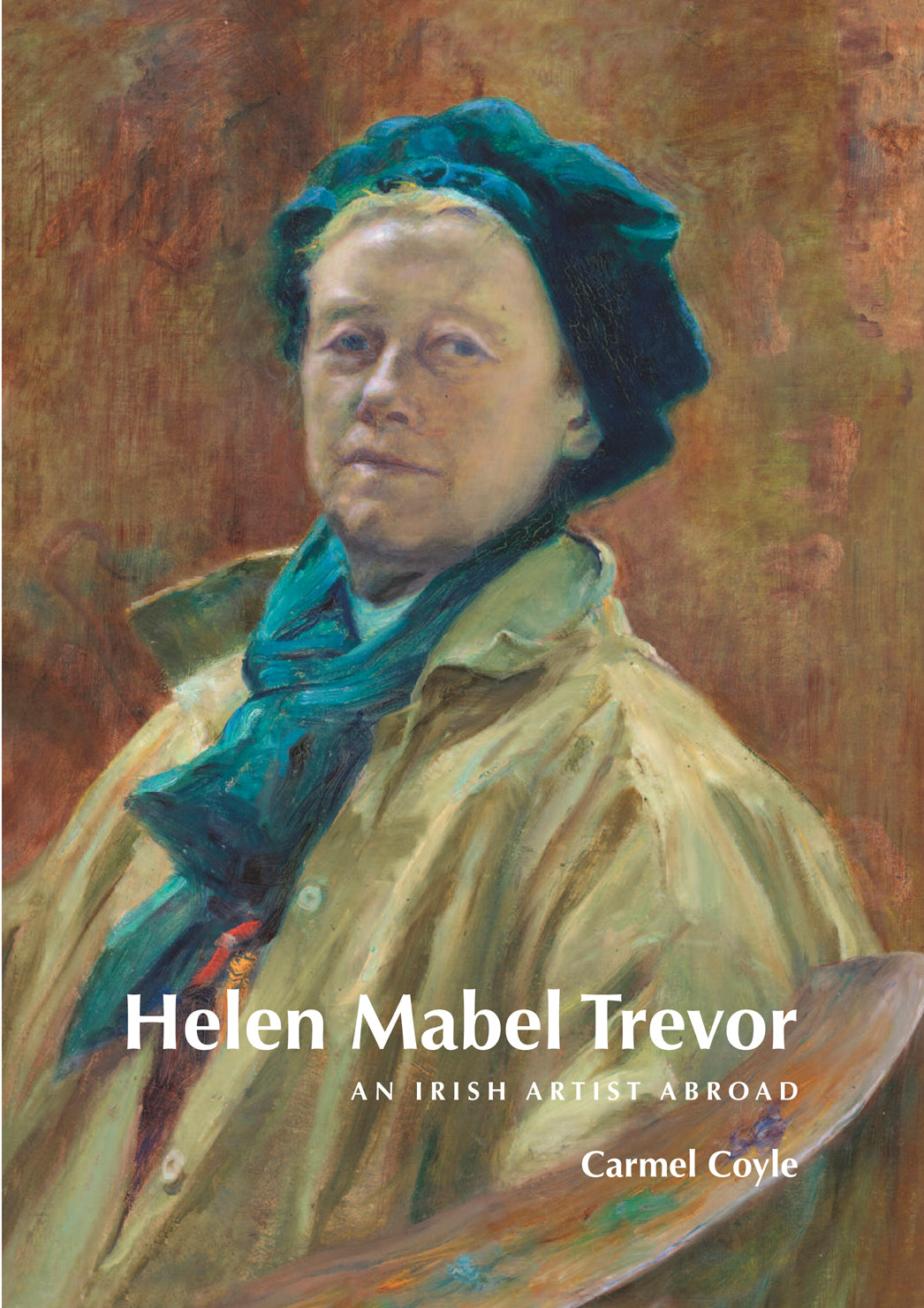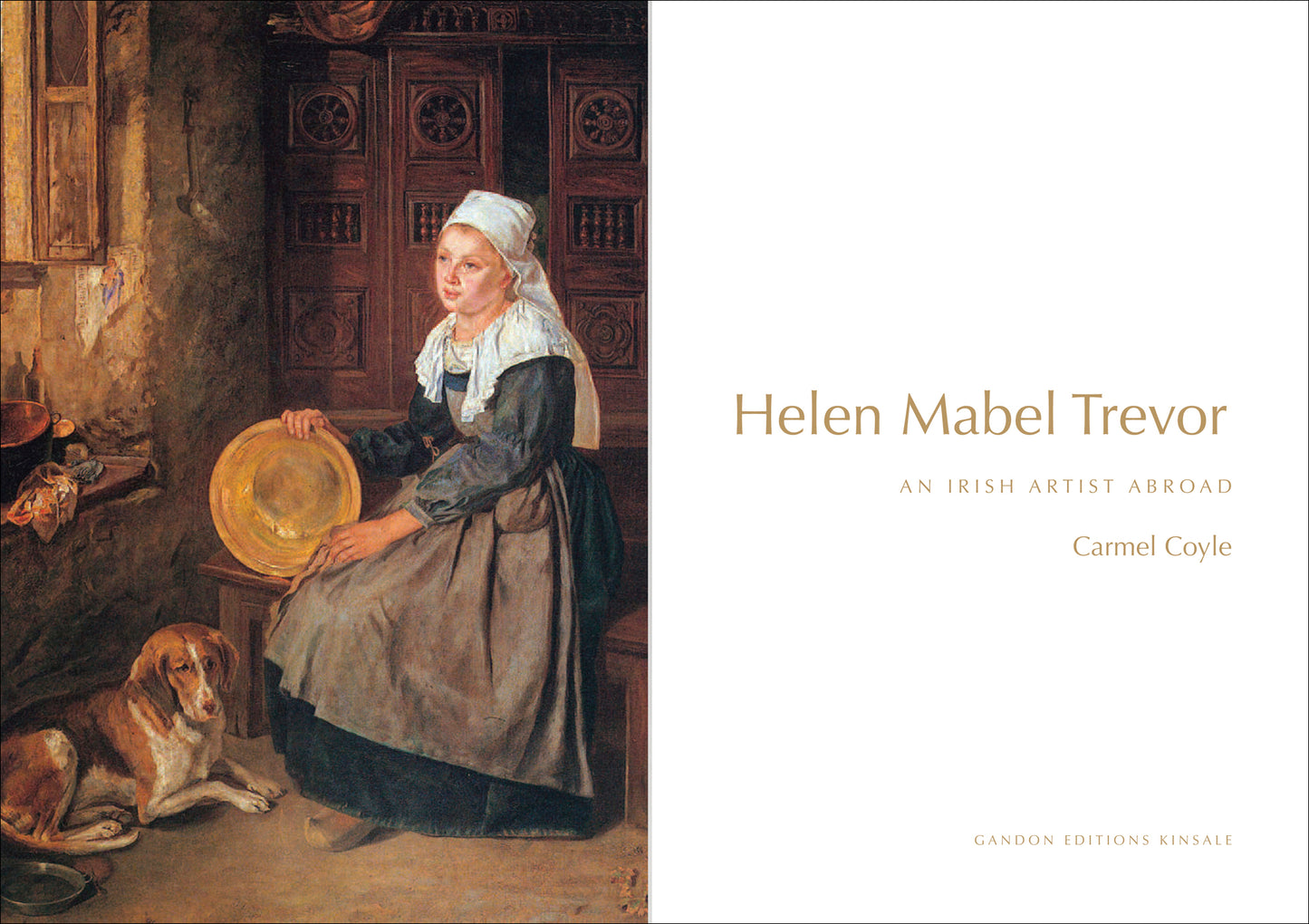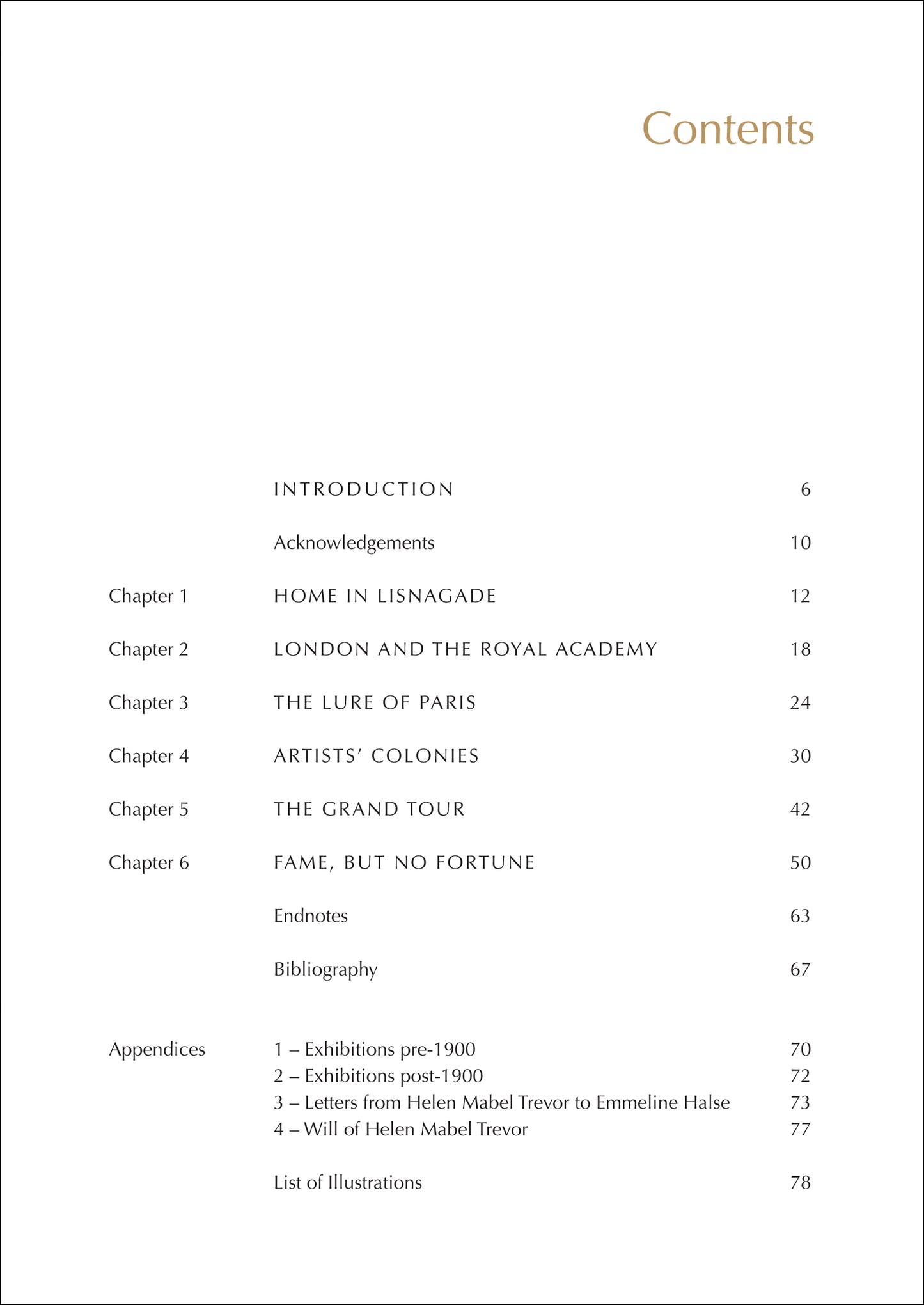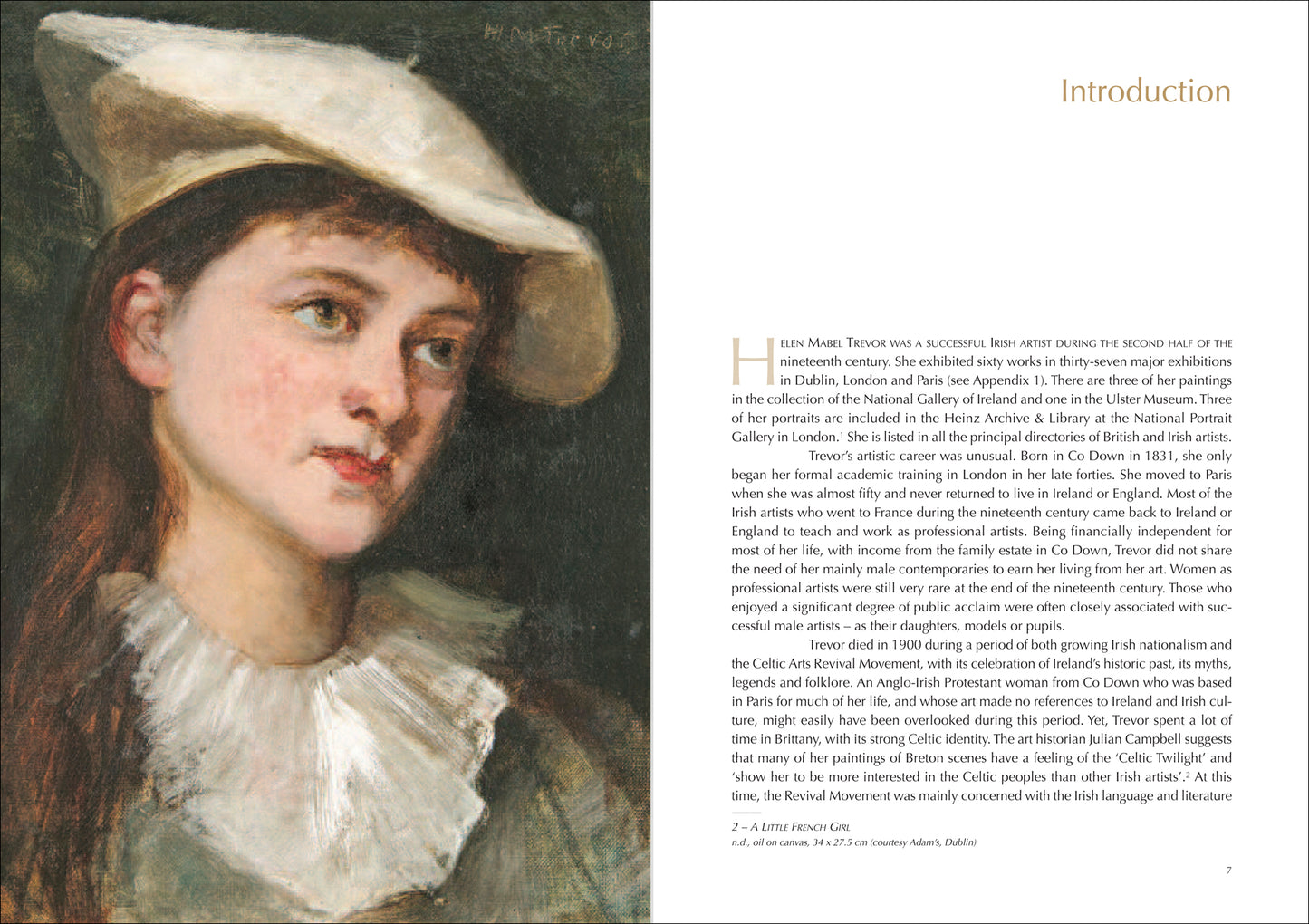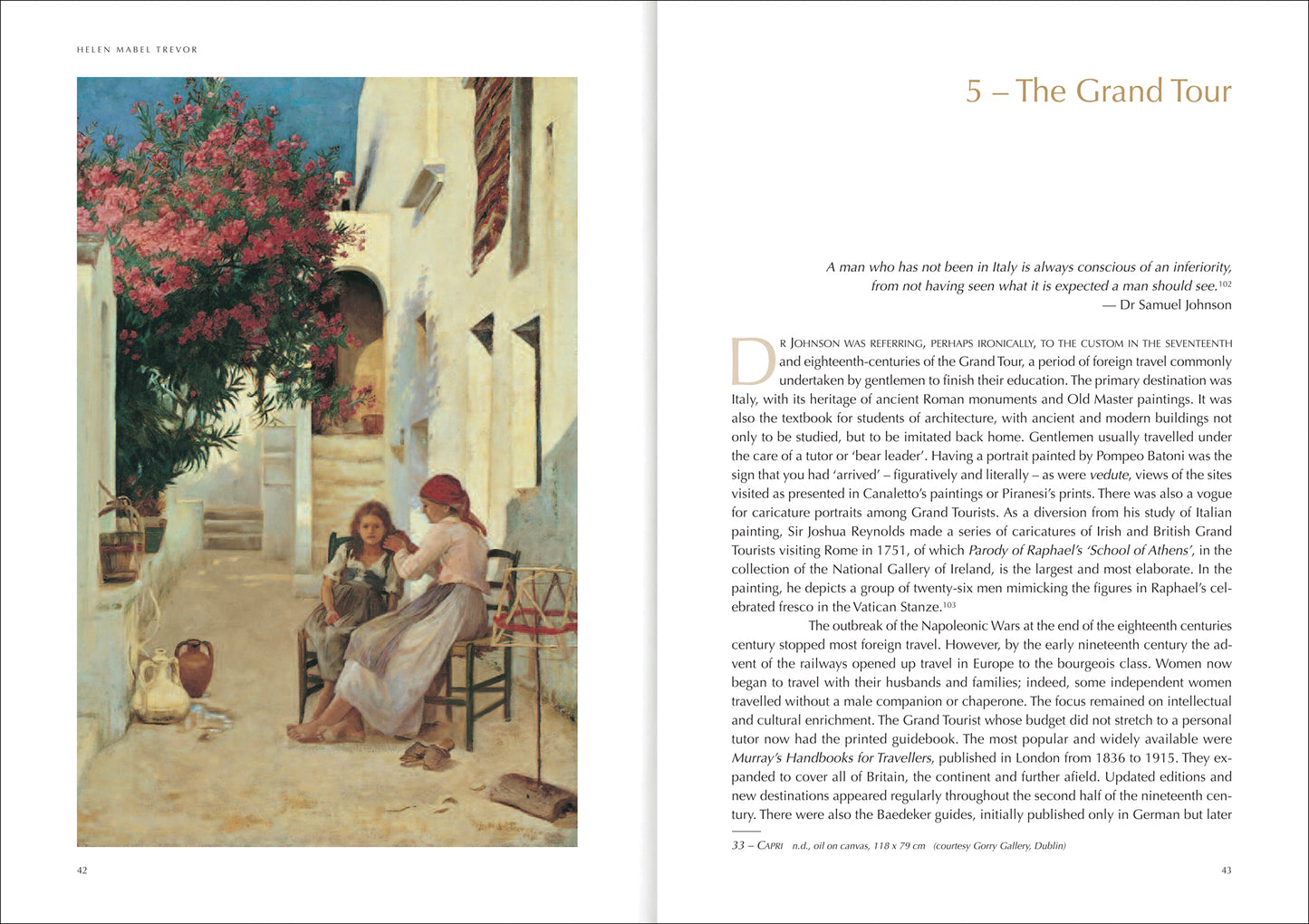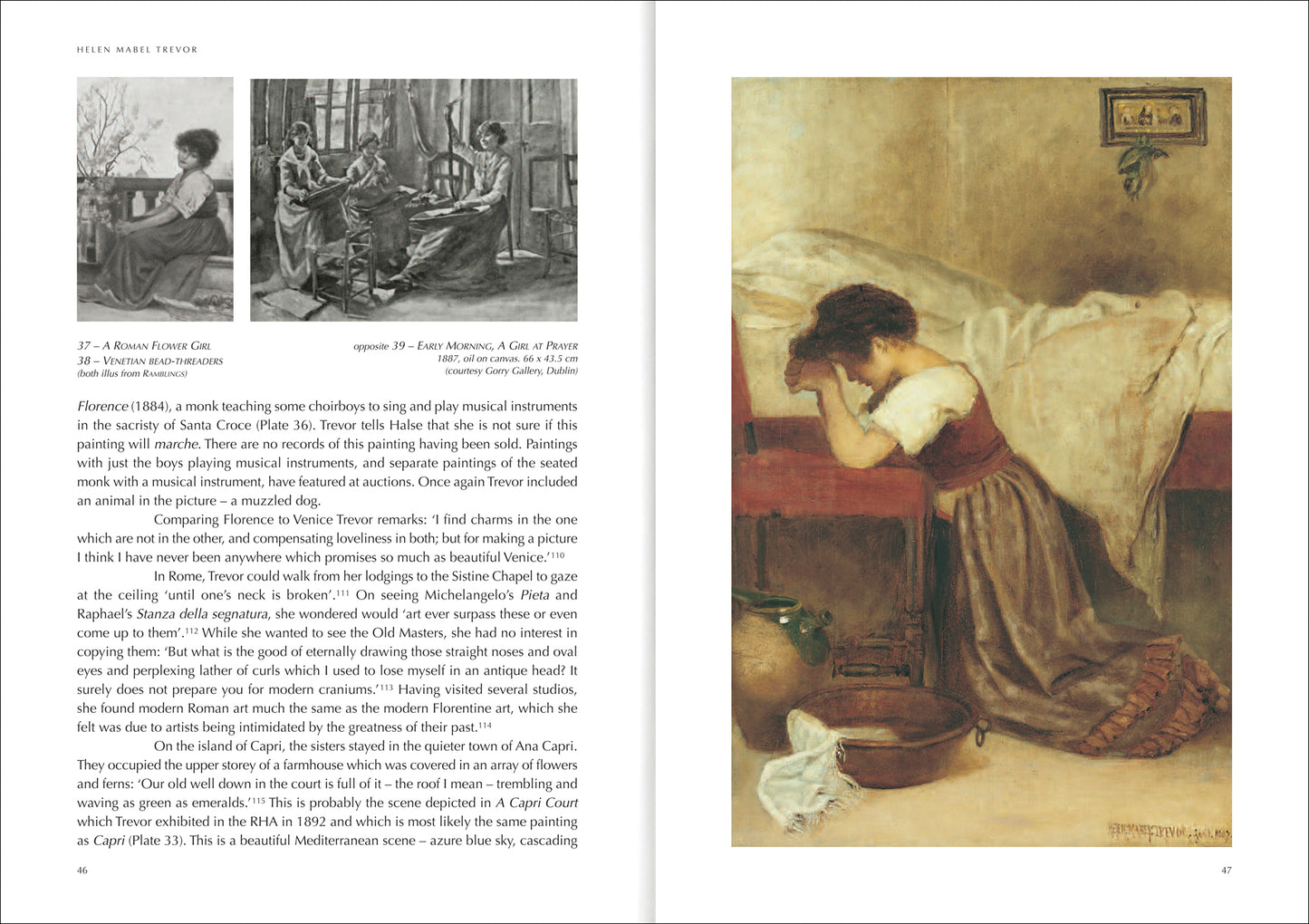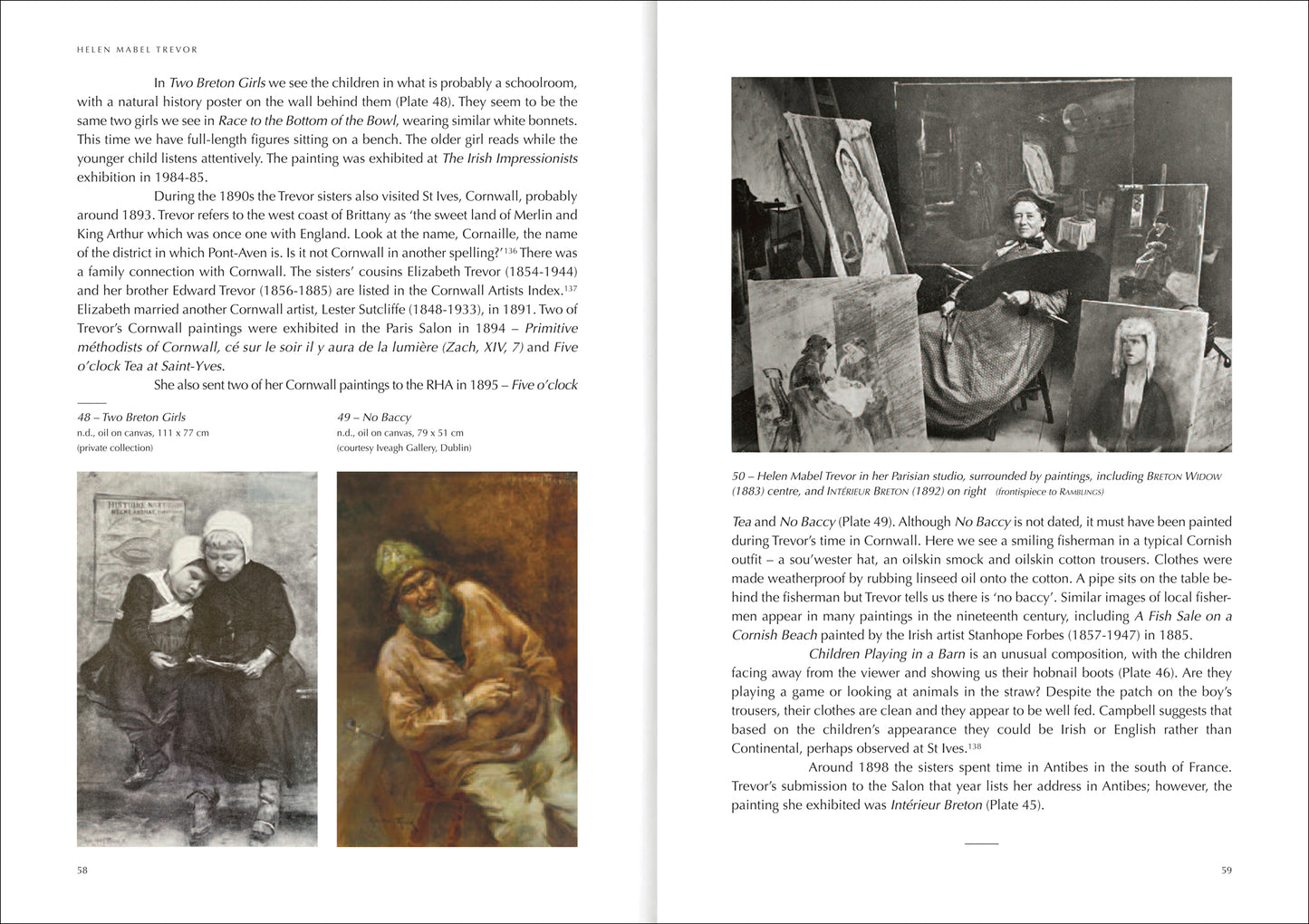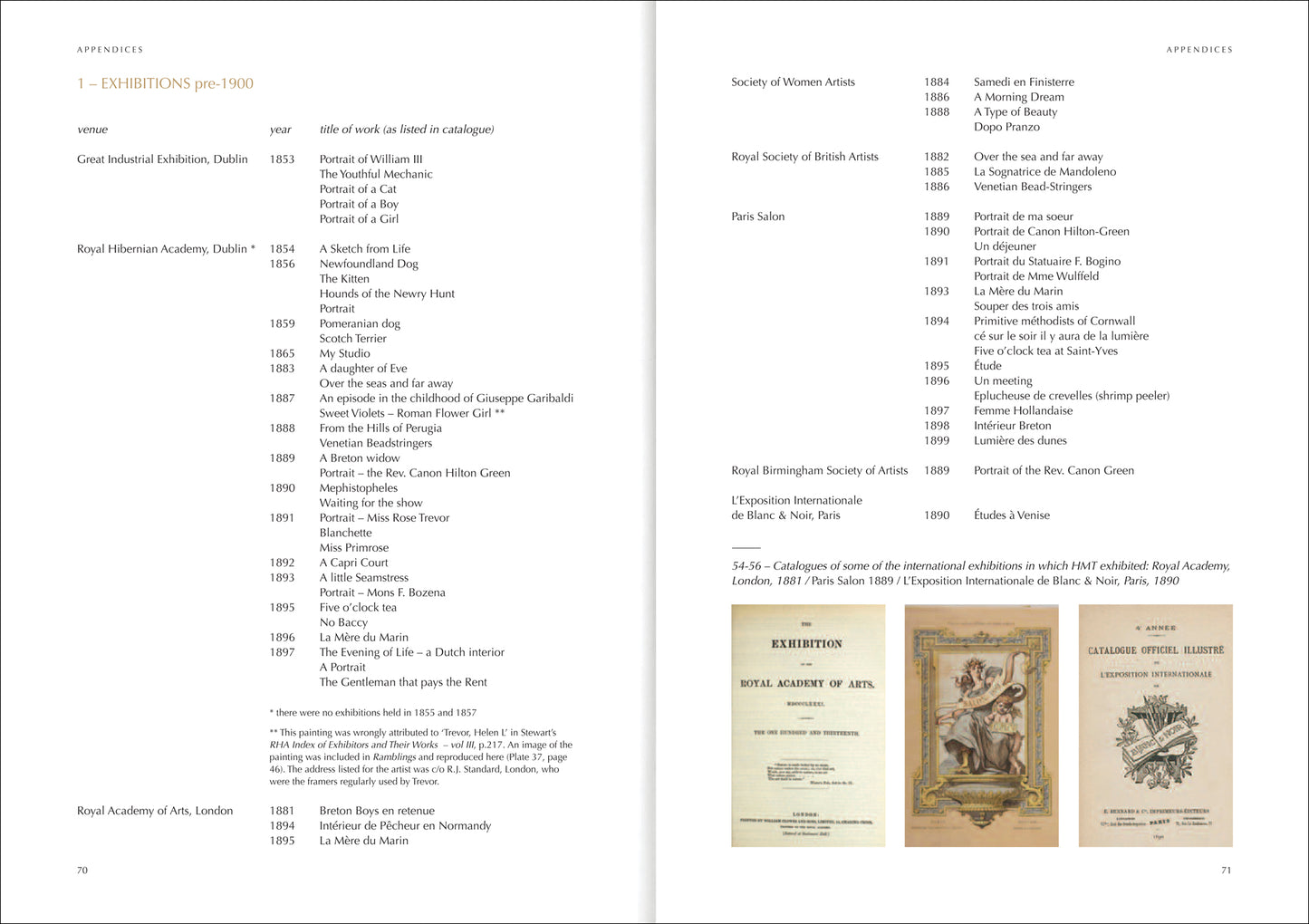Gandon Editions
HELEN MABEL TREVOR – An Irish Artist Abroad
HELEN MABEL TREVOR – An Irish Artist Abroad
Couldn't load pickup availability
Share
by Carmel Coyle
ISBN 978 1910140 291 80 pages (hardback) 24x17cm 63 illus
Born in Loughbrickland, Co Down, in 1831, Helen Mabel Trevor was encouraged in her love of drawing and painting from an early age. Self-taught for a large part of her life, she attended the Royal Academy Schools in London from 1877 to 1880. She travelled to France in the 1880s, studying at the atelier of Carolus-Duran in Paris and visiting Brittany and Normandy, where she painted scenes of the daily life of the local communities. She spent six years living in Italy, visiting Florence, Assisi, Perugia, Venice, Rome and Capri. On her return to Paris in 1889 she resumed her studies with Carolus-Duran and made the city her home until her death in 1900.
Trevor exhibited regularly at the RHA in Dublin, the Royal Academy in London, and at the Paris Salon over the years. Key works by the artist are to be found in the National Gallery of Ireland and the Ulster Museum in Belfast. These and many more paintings and drawings are featured in this richly illustrated and long-overdue biography of the artist by Carmel Coyle.
EXTRACT
"After their training in Paris, or during the summer recess, it became popular for artists to spend time in artists’ colonies which began to spring up across Europe. They arrived from countries as far north as Sweden, as far east as Russia and as far west as America. These communities offered a haven from the increasingly industrialised urban centres. Artists were attracted by the beauty of the surrounding countryside, the authentic ‘primitive’ lifestyles of the local people and the low cost of living. They worked in the open air, sketching landscapes, woodlands and scenes of village life. These colonies were the driving force behind plein-airism in the early to mid-nineteenth century, developing approaches that were subsequently popularised by the Impressionists. Artists had always visited the countryside or the coast in search of fresh motifs. However, it was only from around the 1860s that groups of artists moved to locations where they could live together in some sort of community. Michael Jacobs’ The Good and Simple Life provides informal portraits of the social life in eleven artists’ colonies across six European countries, and also Provincetown, Massachusetts. Nina Lübbren’s more extensive study, Rural Artists’ Colonies in Europe 1870-1910, provided the first systemic, comparative and critical analysis of the colonies as a dominant mode of international art practice.
The favourite locations with Irish artists were Barbizon and Grez-sur-Loing in the forest of Fontainebleau outside Paris, and the villages of Pont-Aven and Concarneau in Brittany. Richard Hearn was probably the first Irish artist to go to Barbizon in 1849, followed by Nathaniel Hone the Younger in 1857. Frank O’Meara went there in the 1870s and John Lavery in the 1880s, both of whom also painted at Grez-sur-Loing. Around 1881, Helen and her sister Rose joined this migration and visited Brittany."
— Carmel Coyle, from Chapter 4: Artists' Colonies
| CONTENTS
Chapter 1 Home in Lisnagade 12 Appendices Endnotes / Bibliography / List of Illustrations |
